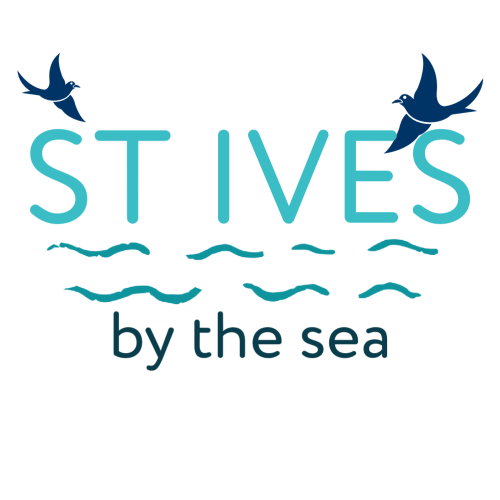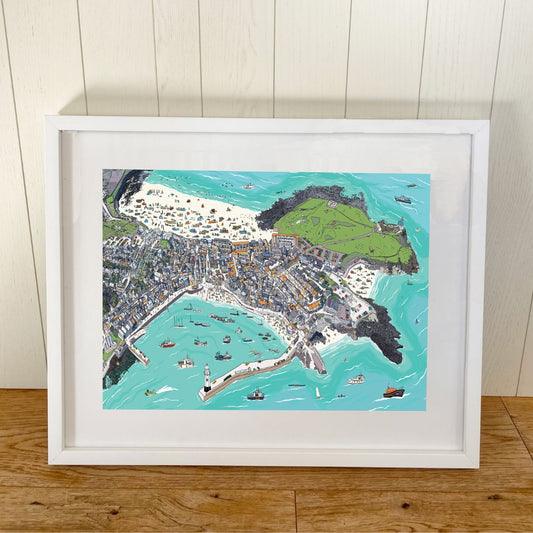Rockpooling In St Ives Cornwall – A Minature Underwater Paradise
Rockpooling was one of the things that most captivated me as a child on the beach. We used to go on holiday to the Gower Penisula in Wales, where there were rockpools galore to explore. I must have spent days with my head down, peering into the pools, looking under rocks. I think the anticipation of finding some real gem was a greater reward than anything I actually found!
Where To Go Rockpooling in St Ives
There are plenty of places to go rockpooling in and around St Ives. Our 3 favourites are:
Porthmeor Beach – the best ones are at West Beach (the opposite side to The Island). There are good ones by the Island, but these are not so plentiful. There are also some good ones at low tide by The Island.
Porthgwidden Beach – there are no proper rockpools here, but plenty of good rocks that are covered in limpets, mussels and anemones.
Porthminster Beach – there are lots of rockpools and rocks to explore at low tide in front of Pedn Olva Hotel. Do watch the tide though, it is easy to get cut off here!
Other Good Rockpooling Places Near St Ives
Godrevy Beach – if you drive to the National Trust car park on the headland and walk down the steps to the beach, there are some brilliant rockpools.
Gwithian Beach – park in the car park by the Sunset Surf Cafe. There are much bigger rockpools here. Not so much tiny sealife, but sometimes you get some super finds!
Marazion Beach – the walk over to St Michaels Mount has some of the best rockpools around.
Mousehole – park by the Rockpool cafe (big clue in the name!) and clamber down at low tide.
When To Go Rockpooling
We go all year round! We find it is best to plan our rockpooling forays a couple of hours BEFORE low tide. This gives lots of time for exploring, especially at the lowest tide line where the best finds often lurk.
Windy days tend not to be the best days for rockpooling. The pools get stirred up too much by the wind and it is much harder to see things.
Rockpooling Equipment
In theory, you don’t need anything special to go rockpooling except sharp eyes and enthusiasm (and some sunscreen and a hat on a sunny day!).
We used to take nets with us, but since going on a guided rockpooling event (held by The Great Outdoors) we realised that nets can damage things and actually scare most creatures away.
A couple of clear buckets or tupperware boxes is a really useful thing to have. Fill them partially with water and stick in a bit of seaweed for shade. You can place your finds in it and get a really good view of their behaviour. The reason I suggest a couple of buckets is that some crabs (red velvet crabs) can attack other creatures and so are best kept apart!
We often take a magnifying glass to get a really good close look at our finds.
My daughter got a camera which takes underwater photos (as well as normal ones). This produces some amazing photos.
Non-slip beach shoes.
Snacks, drinks or a full blown picnic!
My Top Rockpooling Tips
Think like a marine creature! Where would you like be if you were a little crab or fish caught in a rock pool. Look under things, stones, seaweed, rocky overhangs. Dark, shady spots. You need to get (gently!) stuck in there!
Look for patterns in the sand. This can indicate there is a creature hiding under the sand there.
Stand or crouch over the rockpool with the sun in front of you. If you have the sun behind you, you will cast a big shadow over the rockpool. This will make it harder for you to see things, but, more importantly, it will scare the creatures and make them hide all the more cleverly.
Stay still and be very quiet in one place for a while and just watch. Once the creatures get used to your presence they make venture out so you can see them.
Rockpooling when it is very busy and noisy is usually fruitless. Clamber over rocks and head down to the tide line away from the crowds.
The Most Common Rockpool Creatures We Come Across In St Ives
Beadlet Anemone. This looks like a blob of red jelly.
Sand Worm. This is usually burrowed beneath the surface, if you look carefully you can see a tube protruding from the sand, which the worm lives in.
Common Cockle.
Blue Mussel.
Common Limpet.
Acorn Barnacle.
Brittlestar.
The Shore Crab
Edible Crab
Velvet Crab (very snappy!)
The Hermit Crab
The Common Prawn
The Common Blenny
Rock Goby
Rockling
Chiton
Porcelain Crab
Brittle Star Fish
Common Star Fish
Sea Snails
Seaweed
Mermaids Purses
The Most Important Thing About Rockpooling Is…
Always put the creatures you have found back in the pools. They really don’t want to come home with you!
Have you read 101 Brilliant Things To Do In St Ives Cornwall?
It will give you so many ideas of things you can do on your next visit to our lovely town!
Have You Heard About Our St Ives Game?
If you like St Ives you will love playing it!








